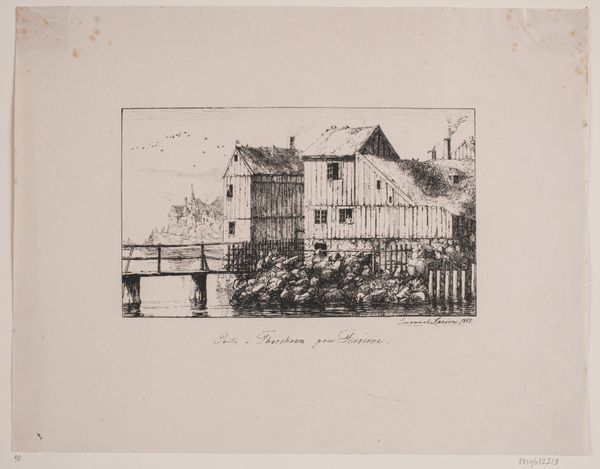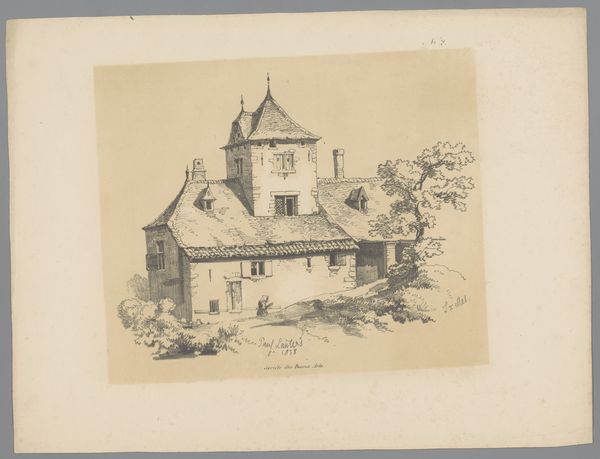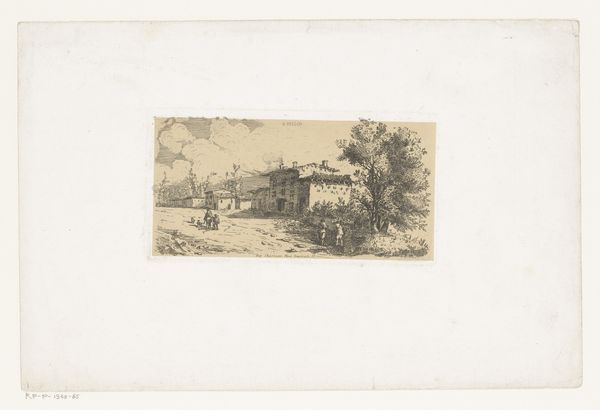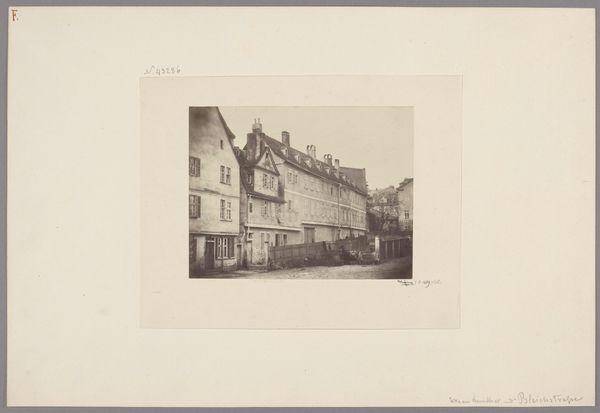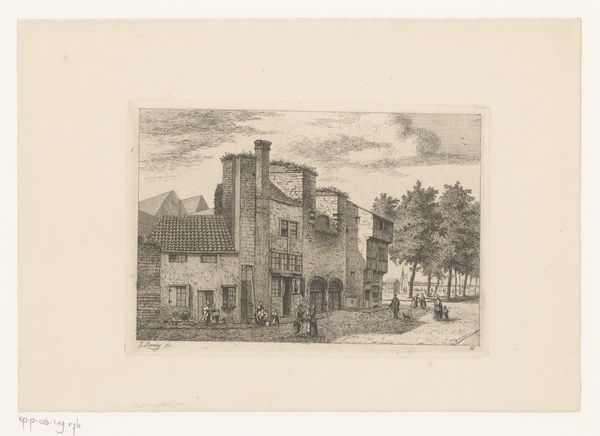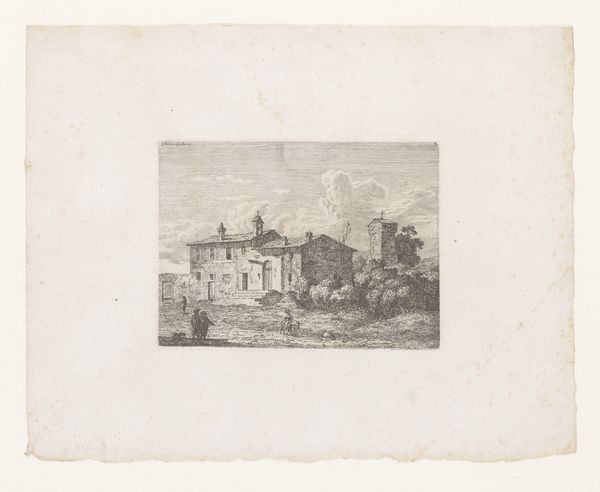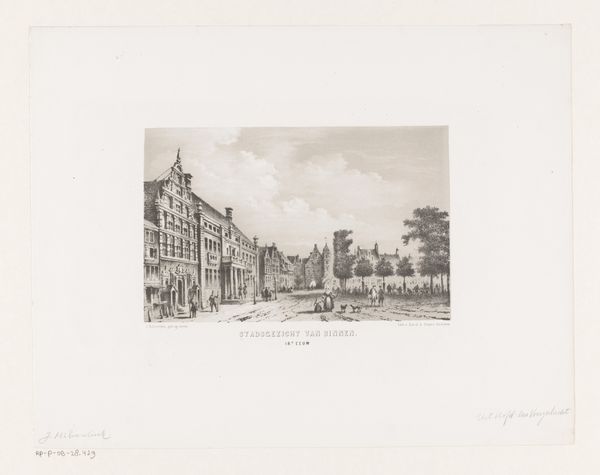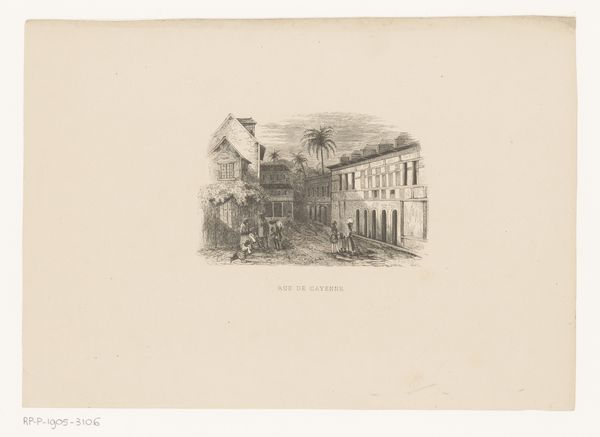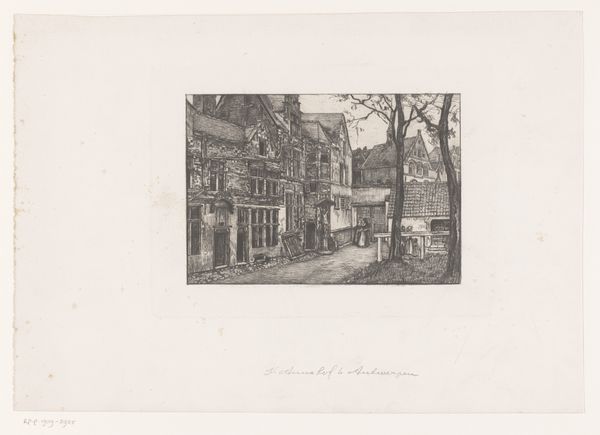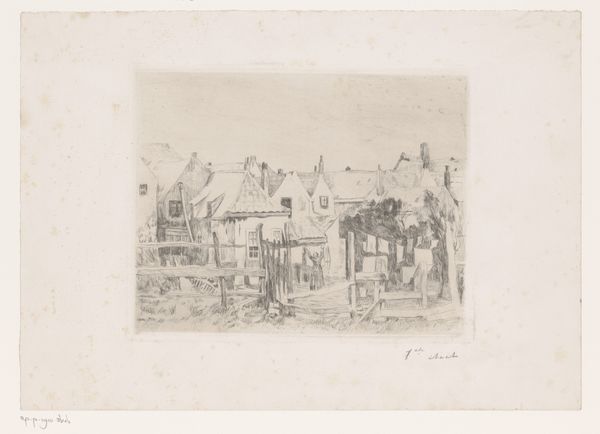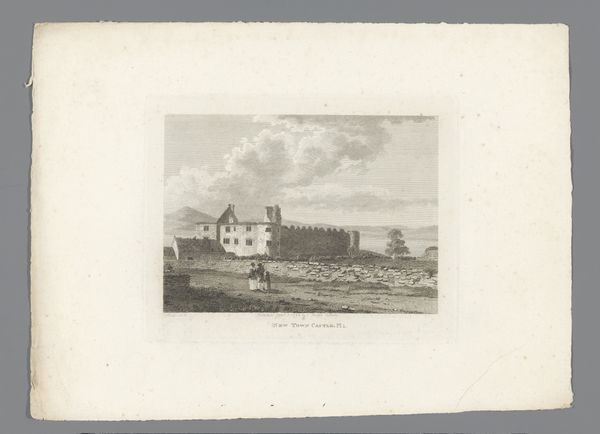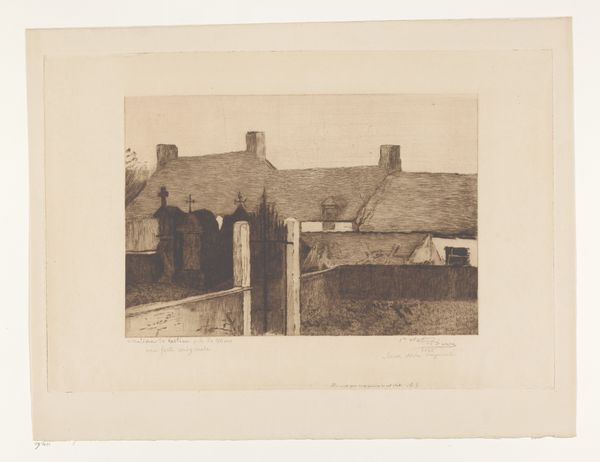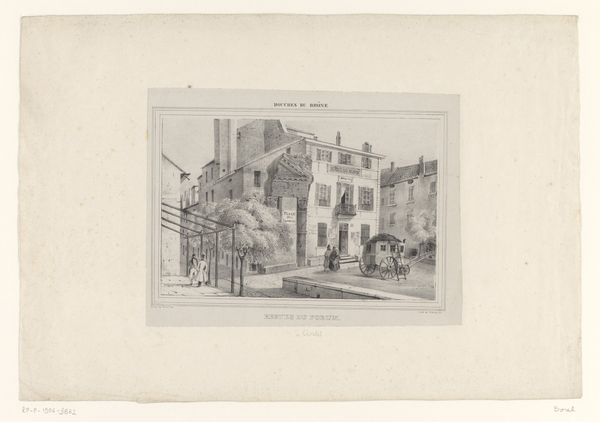
lithograph, print, etching
#
lithograph
# print
#
etching
#
landscape
#
etching
#
realism
Dimensions: 225 mm (height) x 276 mm (width) (bladmaal)
Curator: Here we have Emanuel Larsen’s “Parti i Thorshavn på Færøerne,” a lithograph and etching created in 1850. Editor: It has an intimate, almost melancholic feel to it. The composition, with the stark buildings juxtaposed against the water, creates a strong sense of isolation. Curator: Indeed. Larsen captured a slice of life in Thorshavn, Faroe Islands, a remote community shaped by its maritime identity. The piece, rendered through etching and lithography, embodies a form of 19th-century visual journalism. These communities often faced harsh environmental conditions and significant economic constraints, factors which are visibly ingrained into their dwellings. Editor: The textures are captivating. The roughness of the stone foundation contrasting with the clean lines of the wooden structures really highlights the material dichotomy of the scene. You can almost feel the roughhewn quality of the wood. Curator: Those textures aren't merely representational; they speak to the intersectional nature of life on the islands. Class, for example, can be viewed via the means and materiality by which these people make a living. These structures were both home and workspace. There’s a relationship between human innovation and the natural world. Editor: Looking at the placement of the houses, the strong horizontal lines create a structured space, but it is softened by the organic shapes of the rocks, vegetation, and the surrounding water. The birds scattered in the sky create dynamism and movement to offset the structures. Curator: Precisely! Larsen subtly critiques, but simultaneously respects, this society adapting to a space not initially welcoming of human structures. It prompts us to consider broader themes of colonial impacts on indigenous space, class identity, and ecological consciousness, viewed through a 19th-century lens. Editor: Thinking about those stark buildings, their geometric form helps lead the viewer's eye through the scene and to that vanishing point where the town dissolves into mist. In all, there’s a strong visual coherence that unites a disparate collection of shapes, surfaces, and planes. Curator: Yes, examining such details allow us to more carefully address issues of identity within marginalized groups, as they're filtered through an outsider perspective. Editor: For me, deconstructing the artistic language allows the viewer to understand not only the period, but also the artist’s methods of constructing his message. Curator: Absolutely. Approaching this artwork from differing perspectives enriches our collective understanding.
Comments
No comments
Be the first to comment and join the conversation on the ultimate creative platform.
